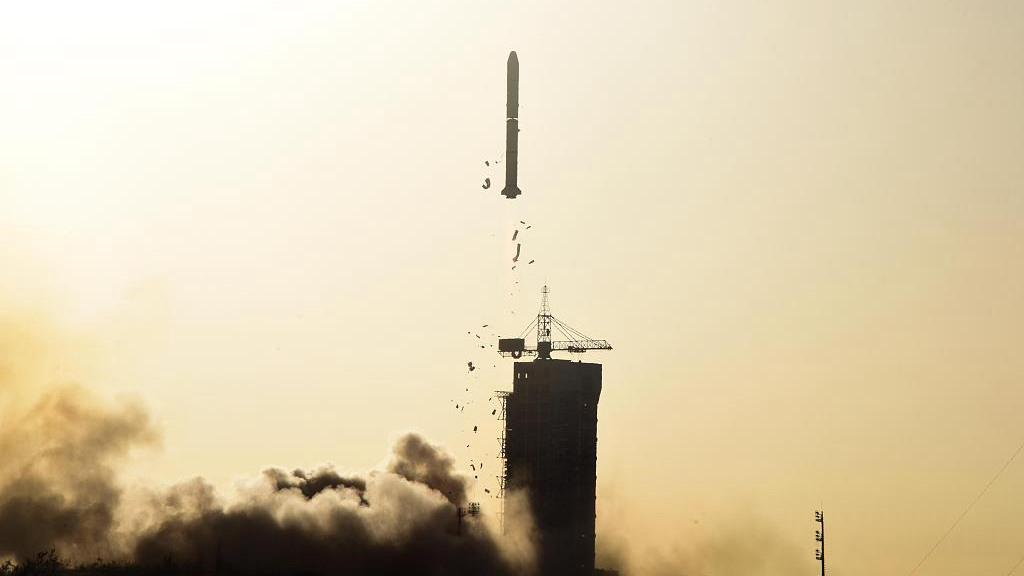

The Long March 2C rocket lifted off carrying the first oceanographic satellite jointly developed by China and France from Jiuquan Satellite Launch Center, October 29, 2018. /VCG Photo
China has successfully tested the technology that can accurately control the landing site of falling rocket parts, making progress toward reusable launch vehicles in the future, China Aerospace Science and Technology Corporation (CASC) said on Sunday.
The CASC said that the test was carried out following a Long March-2C rocket launched on Friday, and focused on grid fins, which are like "wings" on rocket core parts to increase precision in control of its landing location.
According to experts from the CASC, the rocket's flight trajectory is designed to avoid densely populated areas. But after completing the mission, the rocket debris falls under no control with a wide range of landing points which sometimes involve inhabited areas.
In order to ensure the safety of people's lives and property, the current practice is to evacuate people to the safety zone before each mission, which is not only inconvenient for the local people, but increases the cost and task difficulty.
The success of the test is of great significance for improving China's inland rocket landing safety, promoting the follow-up development of carrier rockets' controllable recovery, soft landing, and reuse, according to He Wei, an official with the CASC.
"The swinging grid fins were used to control the rocket debris' direction and attitude, much like the wings of the debris," said Cui Zhaoyun, deputy chief designer of Long March-2C rocket. Controlling the landing site of large and medium rockets is much more difficult than that of small rockets, he added.

Copyright © 2018 CGTN. Beijing ICP prepared NO.16065310-3
Copyright © 2018 CGTN. Beijing ICP prepared NO.16065310-3